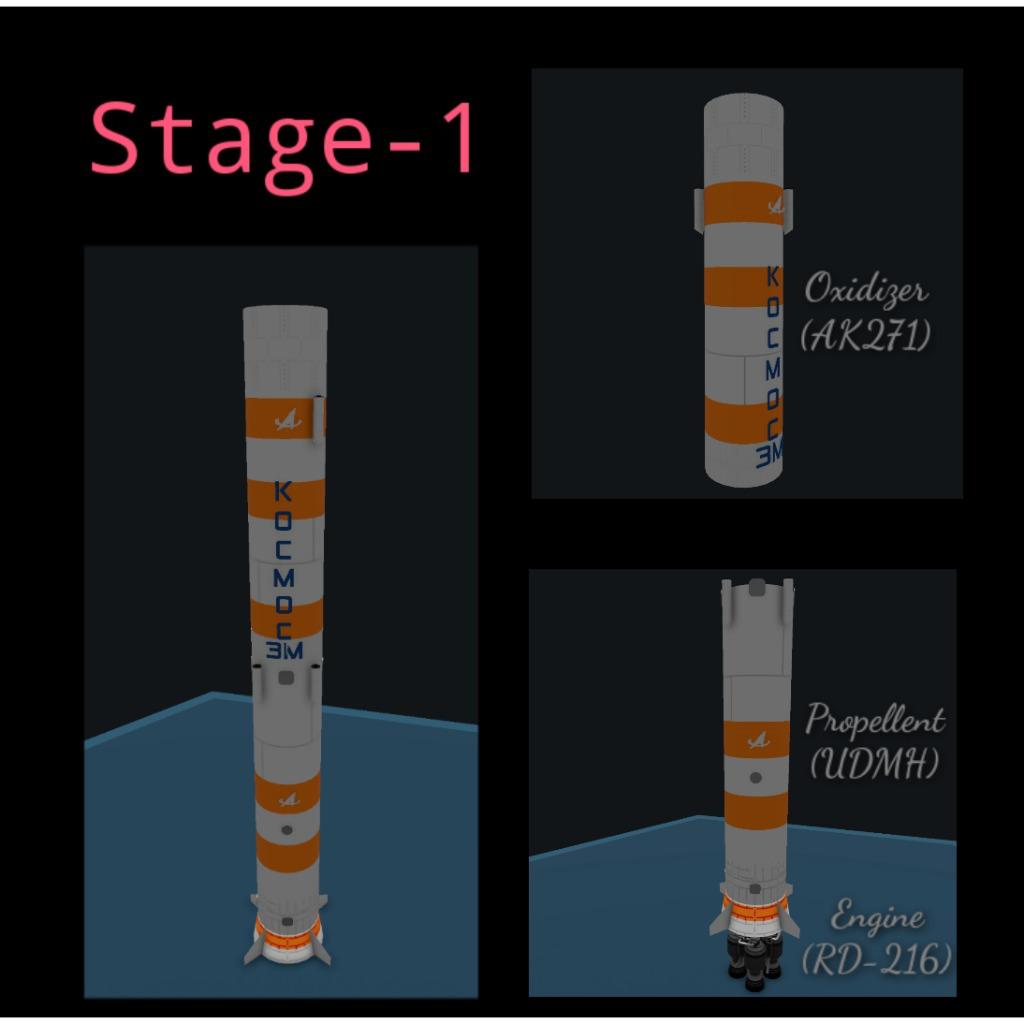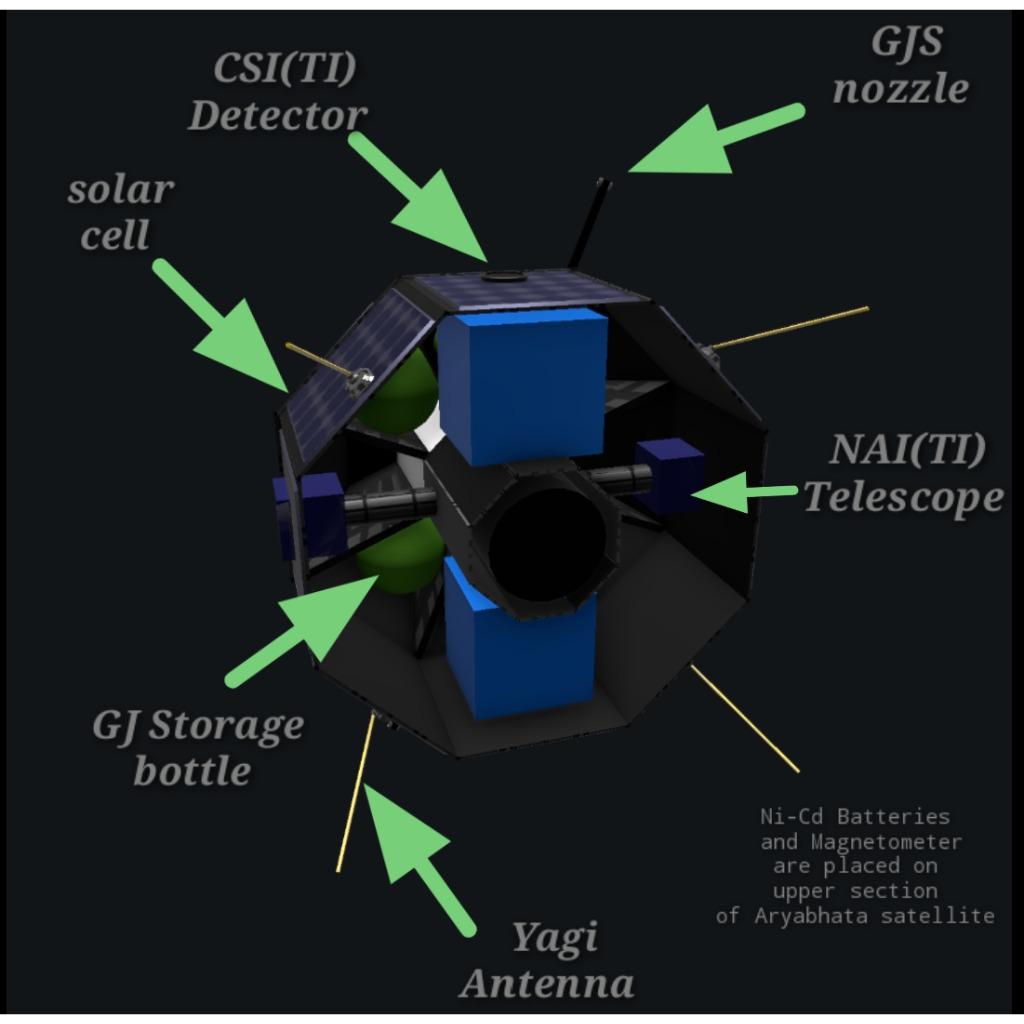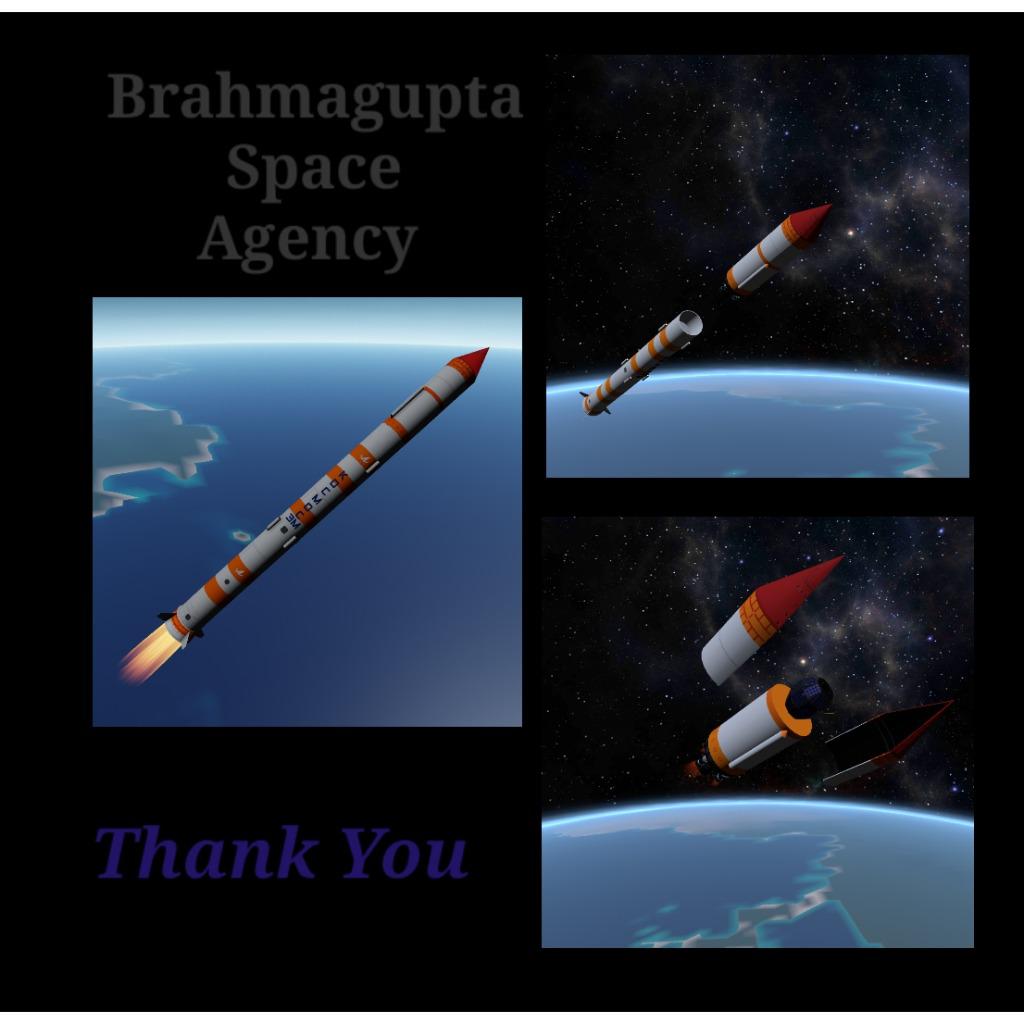Aryabhata satellite, Kosmos-3M and Vizzy program
Brahmagupta Space Agency (BSA) provide you with fully functional Aryabhata satellite along with launch vehicle Kosmos-3M and fully autopilot Vizzy program.
Introduction
Aryabhata
Aryabhata was India's first satellite, named after the famous Indian astronomer. It was launched on 19 April 1975 from Kapustin Yar( Russian rocket launch and development site ). It was built by ISRO (Indian Space Research Organisation) and launched by the Soviet Union.
The primary objective of the Aryabhata mission were to indigenously designed and fabricate spacecraft system and evaluate their performance in orbit; evolve the methodology for conducting operations on the satellite; setup ground-based receiving, transmitting and tracking system; and establish relevant infrastructure for fabrication, testing and qualification of spacecraft system. It was also to provide Indian scientist with an opportunity to conduct investigation in space sciences: - x-ray astronomy, aeronomy and solar neutron and gamma rays.
Kosmos-3M
The Kosmos (also spelled as Russian: ??´????) rockets were a series of Soviet rockets, derived from the R-12 and R-14 missiles, the best known of which is the Kosmos-3M.
The Kosmos-3M used as launch vehicle to lift roughly 1,400 kg (3,100 lb) of payload into orbit.
Specifications and features of Aryabhata satellite
Specification: -
Shape: - quasi-spherical in shape with 26 flat faces
Height: - 1.19 m
Width: - 1.59 m
Weight: - 358 kg
Features: -
1. Solar cell
- The quasi spherical shape had maximum surface area to derive electrical power from body-mounted solar cells.
- solar cells were mounted on 24 side except top and bottom face.
- solar cells mounted on body over surface area of 36,800 cm² that generated power of 46 W.
2. Ni-Cd batteries
- Aryabhata satellite used Nickel-Cadmium (Ni-Cd) chemical batteries as part of its power system.
3. Spin-up gas jet system
- the satellite was stabilized in orbit by spinning it around the axis of maximum moment of inertia
- spin-up was achieved using cold gas jets stored in six gas storage bottle
- it has ability for imparting spin of 60 revolution per minute
4. X-ray astronomy instrument
- it was used to investigate x-ray sources
- it consist of counter telescope and NaI(TI)Scintillator telescope
5. Solar neutron and gamma ray instrument
- the instrument was designed to detect high energy neutron and gamma rays
- the basic detector was Csi(Ti)Scintillator detector
6. Magnetometer
- The Aryabhata satellite was equipped with a fluxgate magnetometer to study the Earth's magnetic field.
7. Yagi antenna
- The Aryabhata satellite utilized a steerable Yagi-Uda antenna for communication purposes.
8. Gyroscope
- The Aryabhata satellite was equipped with gyroscopes for attitude control and stabilization. These gyroscopes helped maintain the satellite's orientation in space.
Specifications and features of Kosmos-3M
Specification: -
Height: - 32.4 m
Diameter: - 2.4 m
Mass: - 109,000 kg
Payload: - 1400 kg
Stage: - 2-stage rocket
Features: -
1. First stage (Grounded)
Max. Thrust 1,420 Kn
Specific impulse 220 s
Burn time 126 s
Engine RD-216
Propellent UDMH
Propellent mass 81.9 t
Oxidizer AK271
2. Second stage (vaccum)
Max. Thrust 155 Kn
Specific impulse 312 s
Burn time 6 min
Engine RD-216
Propellent UDMH
Propellent mass 18.1 t
Oxidizer AK271
Operational instructions
- Vizzy program are developed to enable autopilot for entire journey of aryabhata satellite from its launching to its alignment on orbit with time control. Vizzy program can be disabled by deleting them for manual control on Kosmos-3M.
- Stage-1 thrusters can be used to escape the atmosphere with proper pitch program and can obtain Apoapsis around 142 km.
- Stage-2 thrusters can be used to obtain orbit value for Aryabhata satellite which is Apogee : 650 km and perigee : 570 km with inclination of 50.5°. propellent mass for second stage is not changed and set 18.1 t as per the specification of its real one used because one can use this launch vehicle for there own satellite too by simply replacing Aryabhata satellite from payload with your choice of satellite.
- Activation groups are used to activate various features of Aryabhata satellite.
- Slider-1 can be used to operate fully steerable yagi antenna.
- Slider-2 can be used to initiate spin-up gas jet system in either direction.
Conclusion
The Aryabhata satellite, India's first satellite, was launched using the Kosmos-3M rocket due to a collaborative agreement between India and the Soviet Union. At the time, India did not have its own launch vehicle capable of placing satellites into orbit, so it relied on international partnerships for space launches. The Soviet Union provided assistance to India in launching the Aryabhata satellite as part of their space cooperation efforts.
Detailed study on specifications and its features was carried out before designing the Kosmos-3M and Aryabhata satellite therefore i hope you revert me with positive comment
Thank you
GENERAL INFO
- Created On: Android
- Game Version: 1.2.107.0
- Price: $8,825k
- Number of Parts: 239
- Dimensions: 32 m x 5 m x 5 m
PERFORMANCE
- Total Delta V: 8.4km/s
- Total Thrust: 2.6MN
- Engines: 15
- Wet Mass: 1.09E+5kg
- Dry Mass: 11,376kg
STAGES
| Stage | Engines | Delta V | Thrust | Burn | Mass |
|---|---|---|---|---|---|
| 1 | 4 | 3.2km/s | 1.5MN | 2.1m | 1.09E+5kg |
| 2 | 0 | 0m/s | 0N | 0s | 23,099kg |
| 3 | 5 | 5.2km/s | 155kN | 6.0m | 22,197kg |
4 Comments
- Log in to leave a comment
-
-
-
1,551 DGspace+2 1.6 years ago
Great Rocket, here's my upvote for your road to reaching a hundred points










@DGspace it was possible only from your all support 💖💖